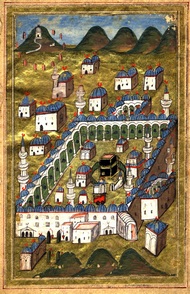Learn more about

Koran,
Middle Est,
end of XVIII century
Middle Est,
end of XVIII century

Koran,
India, XV century.
India, XV century.
Islam comes to life along the west coast of Arabia, overlooking the Red Sea, in the early decades of the seventh century AD.
When he was born Mohammed (which from now on we will call Muhammad), there were two towns inhabited by sedentary Mecca and Yathrib. Christian influences came from the north, or south, and Jewish settlements were frequent both in Yemen and in the western oasis city of Arabia. Byzantine and Arab sources leave a picture, rather vague, the pre-Islamic Arab paganism. Among the objects that were thought to be inhabited by the divine powers of the stones were the favorite. A special veneration Mecca and prestige enjoyed by the black stone. The god Hubal, had reached such importance as to be called par excellence Allah (God). Particularly enjoyed the honor of goddesses Manat, Al 'Uzza and Allat.
The prime commercial situation of Mecca, the great annual fairs that took place in its vicinity, and the cult of the black stone in Kaaba shrine that helped give the city an important religious ceremony that culminated in the pilgrimage, the value of pan-Arabism. The service was entrusted to the Ka'ba the most influential families of the people of Mecca, who handed down these lucrative assignments from father to son.
These pagan pre-Islamic times will be defined by the Koran with the derogatory term of "Jahiliyya", ie times of ignorance. This period retained its importance from the point of view of culture after the establishment of the new religion. By virtue of this fact, the Arabs became aware of themselves and their traditional heritage
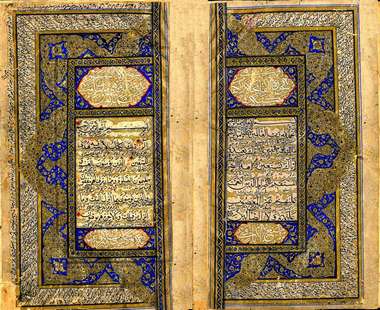
Corano,
India, XVII century.
India, XVII century.
This is, briefly, the environment in which Muhammad was born.
The Prophet
The year of birth of Muhammad can be placed between 567d.C. and 572. The only certain dates of his life are those of the Hegira (ie the emigration to Medina, we already know the name of Yathrib) in 622 and that of his death, 632.
According to sources, he belonged to the great and powerful tribe of Quraysh, practically masters of Mecca. His father 'Abdullah died before the birth of his son. His mother, Amina, giving birth had miraculous visions of glory. Also died early, leaving the orphaned Muhammad to the care of his paternal grandfather 'Abd al-Muttalib, but he too died after only two years, and eight years Muhammad came under the tutelage of his uncle Abu Talib.
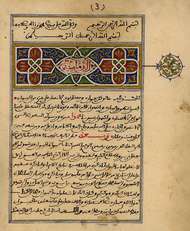
Kitab Hayat Al-Hayawan,
Animal's life.
Morocco, middle of XIX century.
Animal's life.
Morocco, middle of XIX century.
Since he is famous for its trustworthiness and honesty was employed as a trustee for the rich widow, Khadija, did for her and her caravans many trips, and finally married her. After fifteen years of marriage, Muhammad began, during the long and periodic retreats under the pre-Islamic paganism, to have some vision, which is believed may have preceded the auditory events.
The tradition, but it is also found in the Koran, Muhammad said that when it was hit by divine revelation, fever fell to the ground and crying asking to be wrapped in a blanket. It also tells us that after the earliest revelations of the divine word flow has had a temporary stop, then resume with the Sura XCIII putting an end to a state of great despondency bordering on despair. For about three years Muhammad conveyed the revelations and their content only to a few close friends. According to tradition the first converts were his wife Khadija, his cousin 'Ali, his adopted son Zaid, and the two caliphs Abu Bakr and Uthman future. Towards the end of 612, God commanded Muhammad to begin his public apostolate. From this time the persecution of Muhammad and the small group of his followers increased, the Quraysh, who well understood as a possible victory of monotheism, muhammad would mean the end of their political and religious dominance, began to make life impossible to Mecca. With the conversion of Omar, an
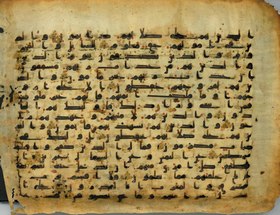
Leaf of Koran.
North Africa, IX-X century.
North Africa, IX-X century.
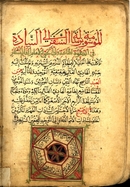
Risala,
Iraq, XVII century
Iraq, XVII century
In 622, with the covenant of Al Aqaba, the inhabitants of Yathrib Muhammad recognize the head of the city. Towards the end of September comes to Yathrib Muhammad that from now on will be known as Madinat an-Nabi (Medina) is the city of the prophet. From this moment the life of Muhammad is characterized not only by the revelations, however, and being a messenger and prophet of God, but also on sustained political effort to ensure peaceful coexistence to the inhabitants of Medina, to ensure commissions oasis for affirm the rights of the new community and to affirm and strengthen relationships, hierarchies, communications, and everything can be judged essential to a company born and raised in a very short time. Thanks to her strong sense of diplomacy, in 629, Muhammad and the Muslims are making the pilgrimage to Mecca.
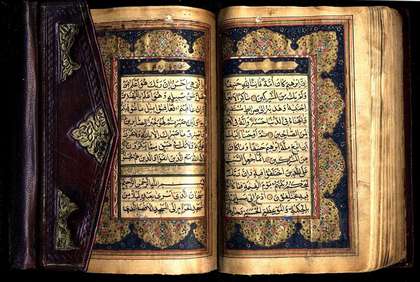
Koran. India, end of XVIII century.
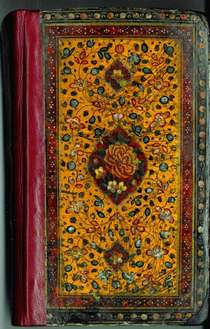
Koran,Painted and
laquered binding
India, XVIII century.
laquered binding
India, XVIII century.
In 632 Muhammad performs what is called "farewell pilgrimage" during which Arafat gave a sermon on the hill of believers to whom you have an echo in the Koran V, 3 cited below:
"Today we have perfected your religion unto you, and I completed My favor upon you, and I liked Islam a religion for you." The Prophet died on 8 June 632 in the arms of his wife A'isha.
The Koran
It is not easy to explain in a few lines not only what is but also what is in the Koran for a Muslim. Following example illustrates a prominent Sunni definition of the
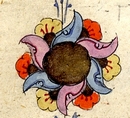
From this definition it is clear that: the Koran is eternity in the divine substance, coeternal with God as its attributes, and literally dictated by God to the Prophet.
The Muslim is obliged to believe that: the Koran is a book revealed by God through an angel to the Prophet (Cor XXVI, 193) and derived from a heavenly Archetype (XLIII, 4), revealed in a blessed night (XLIV, 3) , and subsequently fragments (XVII, 106), so that a fragment back can also repeal an earlier (II, 106; XIII, 39 etc..), to read chanting (LXXIII, 4, 20). The Qur'an confirms the prophetic messages contained in the earlier scriptures (II, 41, III, 3, V, 48 etc..) And is revealed to Muhammad for free (XVII, 86) and unexpectedly (xxviii, 85-86). And 'inimitable (XVII, 88), and no man can alter (X, 15, XVIII, 27). It was
Koran,
Persia, XV century
Persia, XV century
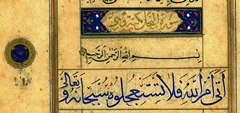
The division into suras of the Koran is very ancient and probably dates to the review of Abu Bakr.
With the exception of the first, called the "Sura pioneering," the Koranic suras are ordered by length: the longest at the beginning, the shorter end. The division into verses is not so widespread and accepted as one of the suras and the numbering of the verses may vary. Each measure is preceded by the title, usually taken from a characteristic word in the text of the measure itself, often completely inconsistent with the general content. All measures, except the ninth, which was originally one with the eighth, beginning with an invocation called "basmala" ("In the name of God the Compassionate the Merciful).

Koran, Middle
Est,
end XVIII century
end XVIII century
Since the early centuries of Islam exegetes were interested in solving the problem of exact chronological classification as possible and unanimous Koranic suras, this is because, as we have seen a verse from the rear may repeal an earlier one.
To reconstruct the probable chronology of the suras you can follow the events in the life of the Prophet and the early Islamic community, distributing them into four periods corresponding to the phases of historical development and fundamental doctrine of Islam emerging.
The four periods are : The first Meccan period (610-615); the second Meccan period (615-619); Third Meccan period (619-622) and the Medina Period (622 to 632).

